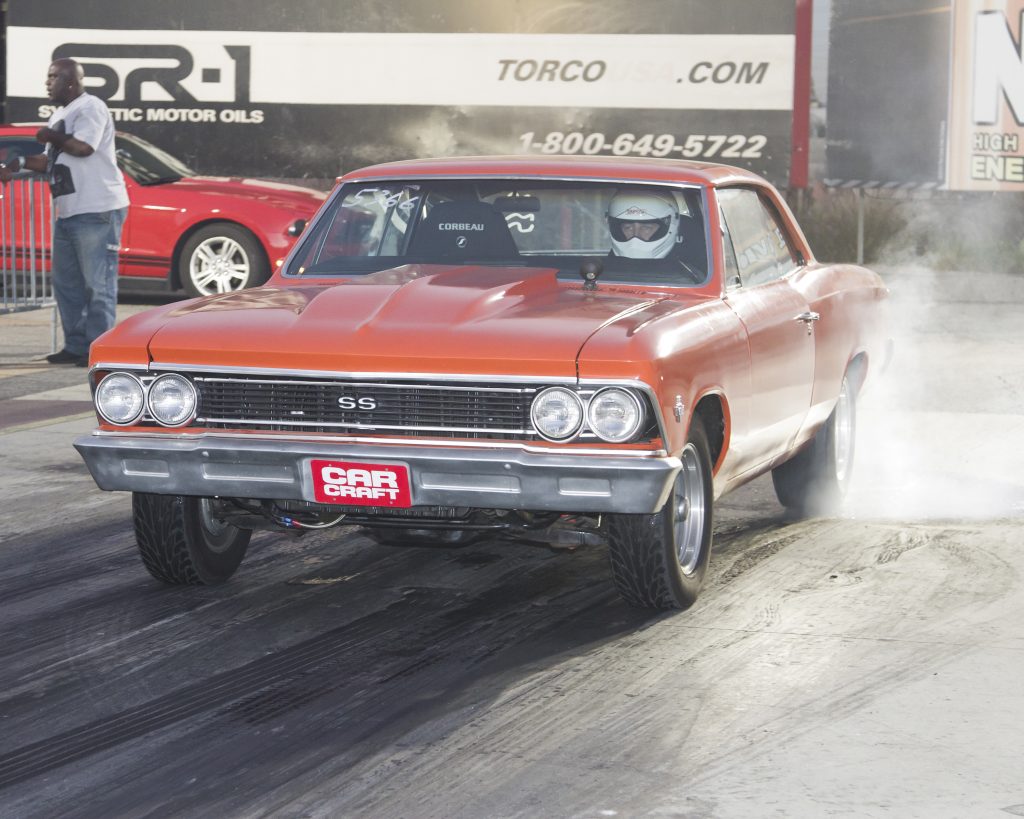A buddy and I were talking about running my car at the drag strip this spring. He said that one thing I can do to help tuning the car is to look at the trap speed.
I thought the whole idea was to run as quickly as possible—so what does the mph tell me that I need to know?
T.M.
This is a great question but the answer will take some time to explain.
When you run your car down the track, the trap speed is the average of the last 66 feet in the quarter mile. They used to take the last 66 feet before the finish line and the first 66 feet after the finish line to average the speed. But later the timer companies shortened it to first 66 feet. The overall average was 132 feet which is ten percent of the 1320 feet in the quarter mile.
If your car averages 100 mph over that last 66 feet it would have travelled that distance in 0.66 seconds. If we put this in an equation it would look like this: 66 / 0.66 = 100 mph. This is how the speed is calculated at the end of either the 1/8th or 1/4 mile. The elapsed time (ET) is simply the time it took to travel either distance.
While it is true that the idea is to travel the eighth or quarter mile in the least amount of time, ET is a direct reflection of how well your car can convert torque and horsepower into acceleration. This is directly related to the simple physics of accelerating the vehicle. Traction is essential to that equation because if you are spinning the tires, then the car is not accelerating as quickly as it could.
Let’s say that your car has been running 12.50 ET at 105 mph consistently and then you add a bigger carburetor and a more efficient exhaust system. Now with these changes the car slows to 12.60. You might be disappointed because the car ran slower by a full tenth of a second.
But then you notice that instead of the normal 105 mph, this first pass produced almost 107 mph—let’s say 106.80 mph. This is what your buddy is referencing. Essentially, the trap speed is a great indicator of how much power your engine is making. So now your car is running 1.8 mph faster than before. So this is a strong indicator that your engine is making more power than it did before.
So why did your car run a slower ET?
Likely the reason is that with the additional power that the car spun the tires slightly on the starting line which cost what we will estimate as roughly 0.10-second in the first 60 feet.
So your buddy is right on the money because what he’s telling you is that the mph is indicating that your engine is making more power than before but this additional power created a traction problem.

So now you need to work on improving the chassis or upgrade to stickier rear tires to improve traction. Many times you can accomplish this by managing the chassis better with adjustable shock absorbers or perhaps a traction aid like traction bars instead of just going to bigger tires.
Also keep in mind that a taller tire will add more tire contact patch to the ground compared to a wider tire. But taller tires also reduce the overall gear ratio so a taller tire might improve traction but might also slow the acceleration rate.
An excellent way to gauge how well your car leaves the starting line is to study your 60-foot times. For a car in the mid 12s a decent 60-foot time would be around 1.70 seconds. The quicker your 60-foot time is the better the car will accelerate down the track. A few years ago we improved the 60-foot times on our 1966 Chevelle merely by working on the chassis by tuning with front and rear double adjustable shocks to manage the weight transfer. Along with managing launch rpm and tire pressure we were able to lower the 60-foot time by more than 0.10-second.
If you run the quarter mile, you can also look at your 660-foot times if the track offers those times.
By studying your car’s acceleration rate with all of these numbers, it won’t be long before your car is much quicker and it can often come from keeping track of your trap speed. If mph drops off one run to the next, it is usually telling you that something isn’t right.

Comments